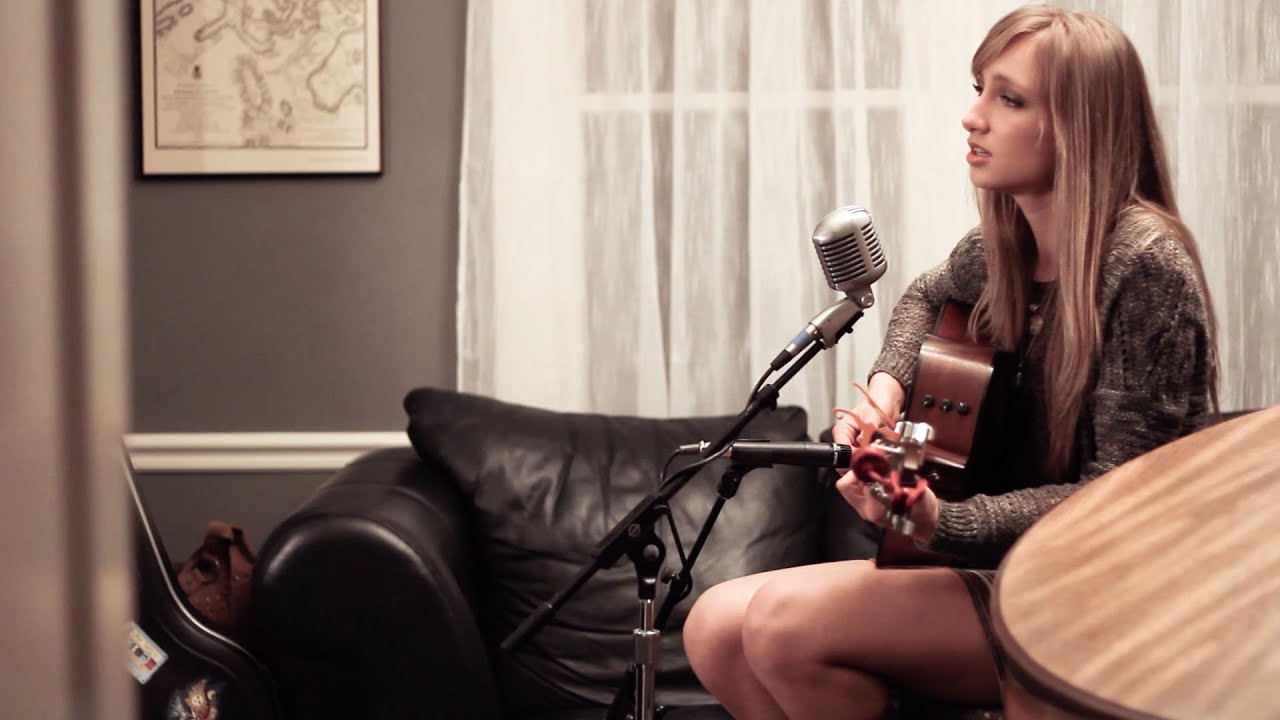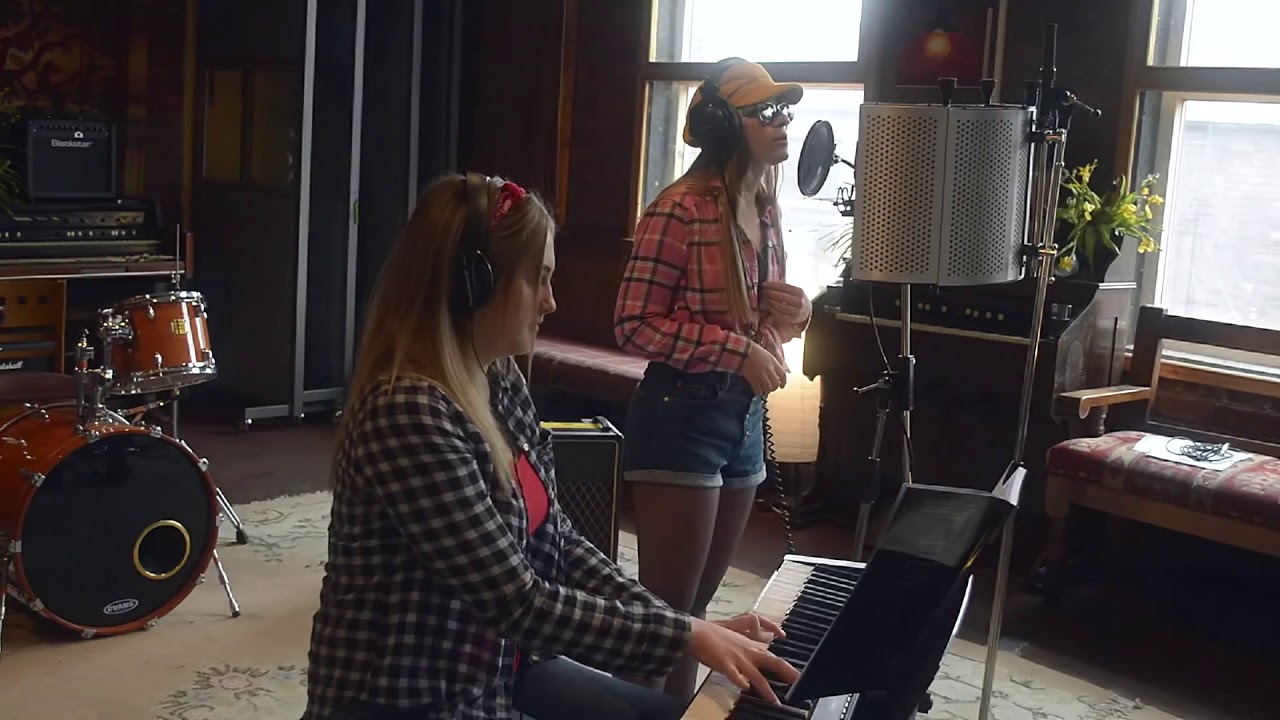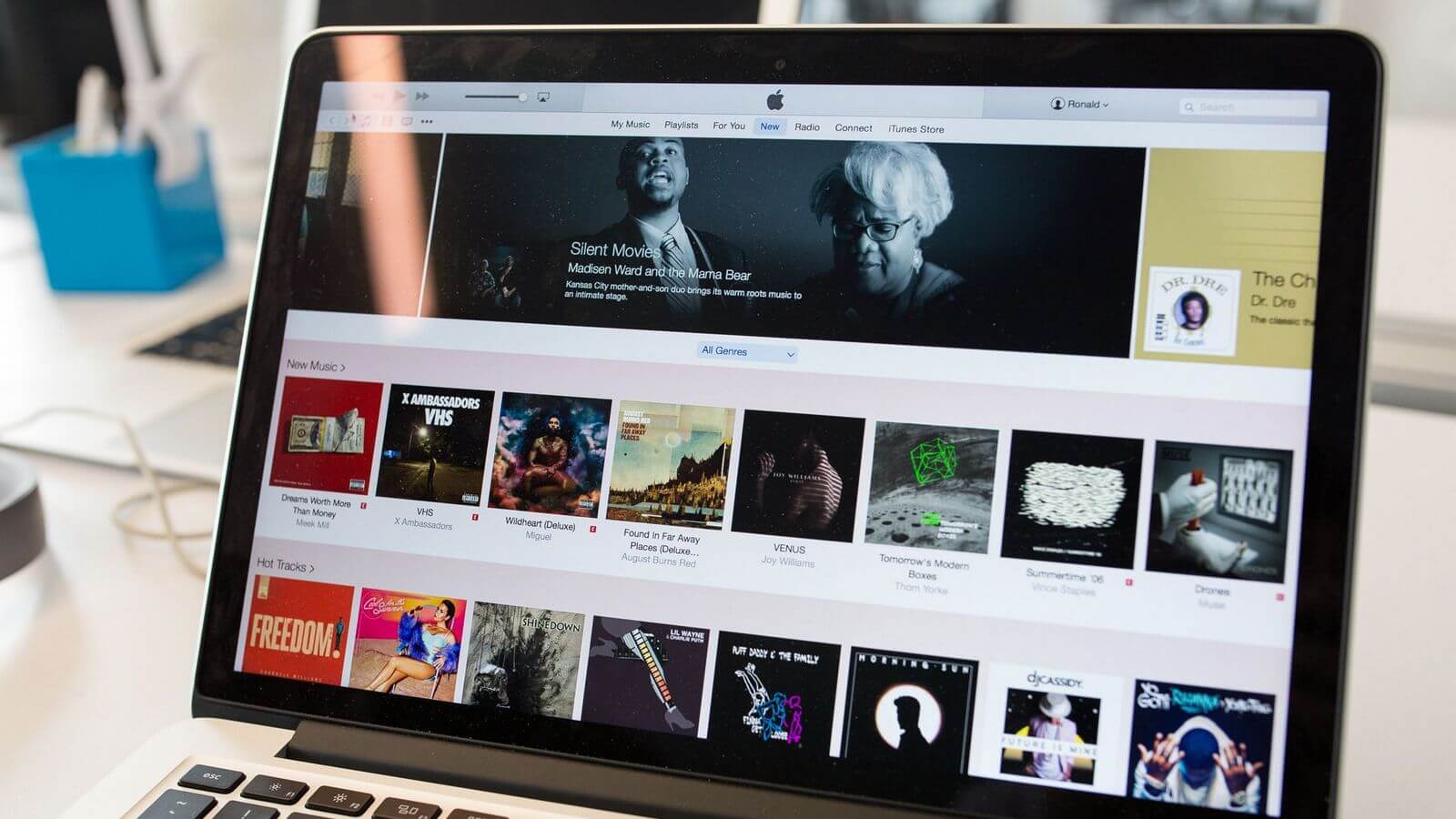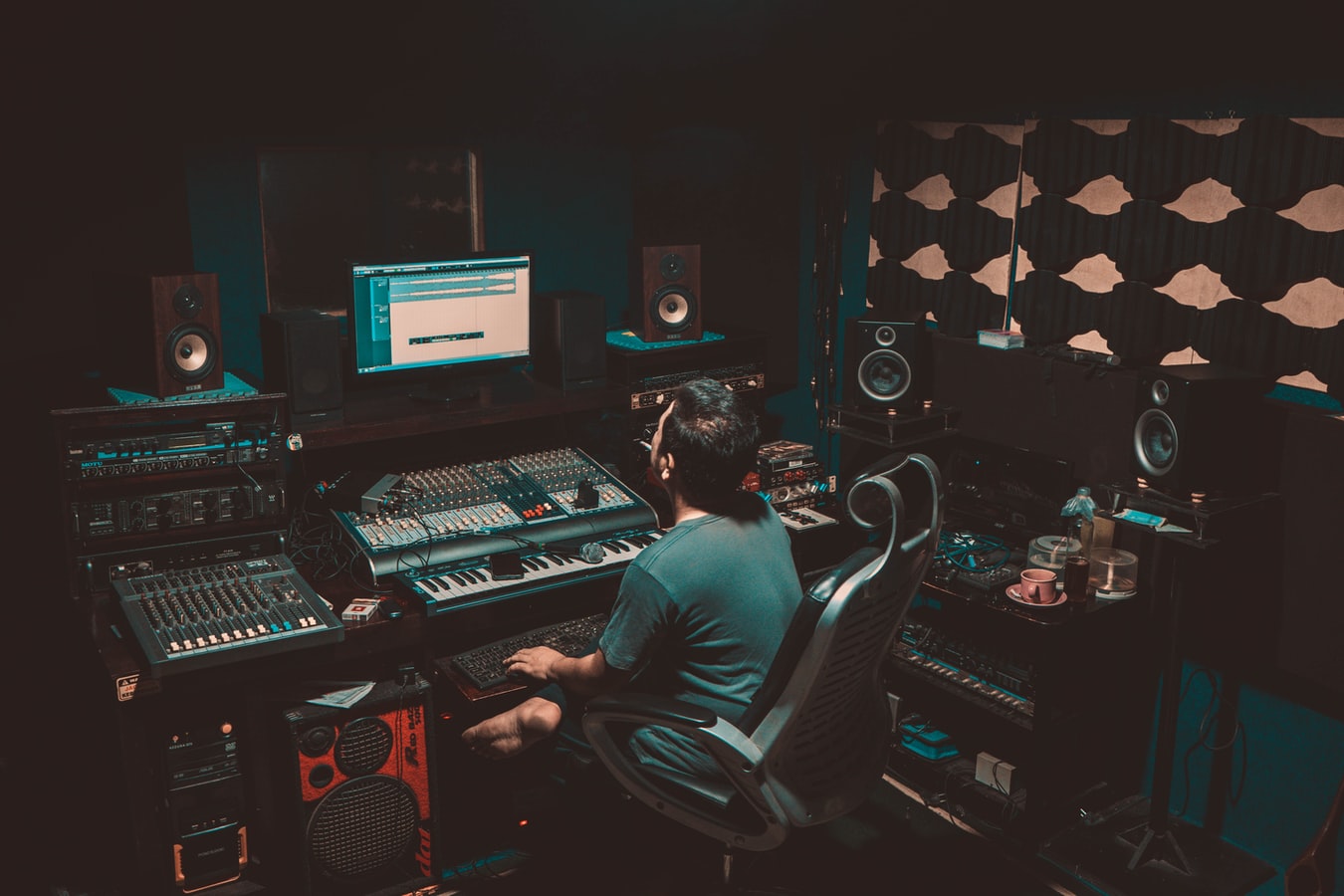Home>Production & Technology>Cover Song>How To Put A Cover Song On Your Record


Cover Song
How To Put A Cover Song On Your Record
Modified: January 22, 2024
Learn how to legally include cover songs on your record and amplify your music with the help of our comprehensive guide. Start producing your covers today!
(Many of the links in this article redirect to a specific reviewed product. Your purchase of these products through affiliate links helps to generate commission for AudioLover.com, at no extra cost. Learn more)
Table of Contents
Introduction
There’s something magical about hearing a familiar song, only to discover that it has been completely reimagined by an artist or band. That’s the power of a cover song. Cover songs have the ability to breathe new life into beloved classics, introduce different genres to new audiences, and even pay homage to musical inspirations of the past.
If you’re a musician or artist looking to add a personal touch to your record, incorporating a cover song can be a fantastic way to connect with your audience and showcase your creativity. But putting a cover song on your record involves more than simply selecting a song and hitting record. In this article, we’ll dive into the intricacies of choosing the right cover song, understanding copyright laws, reimagining the song, preparing for the recording process, navigating licensing and royalties, and finally, marketing and promoting your cover song.
Whether you’re a seasoned musician or just starting out, this comprehensive guide will walk you through the entire process of putting a cover song on your record. So, let’s dive in and explore the world of cover songs, and how you can make them your own.
Choosing the Right Cover Song
When it comes to selecting a cover song for your record, there are a few key factors to consider. First and foremost, you want to choose a song that resonates with you personally. Select a song that speaks to your emotions, showcases your style, and aligns with your musical identity. By choosing a song that you have a genuine connection with, you’ll be able to infuse your own unique interpretation into the performance.
Additionally, it’s important to consider your target audience. Think about the demographic of your fans and the type of music they enjoy. Will they appreciate the song you’re considering? Does it fit the overall theme of your record? While it’s essential to stay true to your artistic vision, keeping your audience in mind can help you make a more informed decision.
Another crucial factor to consider is the level of difficulty of the song. Be realistic about your technical abilities as a musician and vocalist. If you’re a beginner musician, choosing a complex song may be overwhelming and may not leave room for your own interpretation. On the other hand, if you’re an experienced musician, selecting a challenging song can showcase your skills and set you apart.
Furthermore, consider the popularity and recognition of the song. While choosing a well-known classic can bring familiarity and nostalgia to the record, it’s important to put your own spin on it to make it stand out. Alternatively, selecting a lesser-known gem can provide an opportunity for you to introduce your audience to something new and exciting.
Lastly, take into account the licensing and copyright factors. Some songs may have strict copyright restrictions that require obtaining proper licenses or permissions. It’s crucial to research and ensure that you can legally release and monetize your cover song without any legal repercussions.
By considering these factors, you can choose a cover song that aligns with your artistic vision, resonates with your audience, and showcases your talents. The right cover song can elevate your record and become a standout track that captivates listeners.
Understanding Copyright Laws
When it comes to covering a song, it’s essential to have a solid understanding of copyright laws. Copyright protects the original author’s rights to their work, including the lyrics, melody, and composition. Therefore, covering a song without obtaining the necessary permissions or licenses can lead to legal complications and potential infringement.
There are two primary ways to legally cover a song: obtaining a mechanical license and seeking permission from the copyright holder. A mechanical license grants you the right to reproduce and distribute a copyrighted song in a recorded format. You can obtain a mechanical license through a music licensing agency, such as the Harry Fox Agency, or directly from the copyright holder.
It’s worth noting that not all songs are eligible for mechanical licenses or may require additional clearances. Some songs may fall under the category of “controlled compositions,” which means that the original songwriter or their publisher has the right to negotiate the terms and fees for the cover version. In such cases, you’d need to reach out to the songwriter or their publisher to obtain the necessary permissions.
In addition to obtaining the proper licenses, it’s crucial to give credit to the original songwriter and copyright holder of the song. This includes accurately displaying the song credits on your record, mentioning the original artist in any promotional materials, and properly acknowledging the song’s origin when performing it live.
It’s worth mentioning that copyright laws can vary from country to country, so it’s important to familiarize yourself with the specific regulations in your jurisdiction. If you have any doubts or concerns, consulting with a music attorney or licensing professional can provide the guidance you need to navigate the complexities of copyright laws.
Understanding and respecting copyright laws not only keeps you in compliance with legal requirements, but it also shows respect for the original artist and their creative rights. By acquiring the proper licenses and permissions, you can confidently cover a song without worrying about legal ramifications and enjoy the freedom to express your interpretation.
Reimagining the Cover Song
One of the most exciting aspects of covering a song is the opportunity to put your own unique twist on it. Reimagining a cover song allows you to showcase your creativity, musicality, and personal style. By infusing your own interpretation, you can breathe new life into the original composition and make it your own.
When reimagining a cover song, consider experimenting with different musical arrangements, instrumentation, and vocal delivery. Think about how you can add your own artistic flair to the song while still honoring its essence. For example, you might decide to transform a fast-paced rock anthem into a stripped-down acoustic ballad or reimagine a pop hit with a jazz-inspired arrangement. The possibilities are endless, so let your creativity guide you.
It’s important to strike a balance between staying true to the original song and exercising artistic liberties. While putting your own spin on a cover song is encouraged, it’s essential to ensure that the underlying melody, lyrics, and structure are recognizable enough for listeners to connect with the original composition.
In addition to musical reinterpretation, you can also consider altering the song’s tempo, key, or even changing the gender perspective in the lyrics. These changes can add a fresh perspective and allow you to inject your unique personality into the song.
Furthermore, consider the emotional tone you want to convey with your cover version. Do you want to emphasize a certain feeling or mood that differs from the original? Play with dynamics, phrasing, and vocal techniques to bring forth the desired emotional impact.
Remember, the goal of reimagining a cover song is not to overshadow the original but to honor it while adding your own artistic touch. By doing so, you create a refreshing and captivating rendition that captivates listeners and showcases your individuality as an artist.
Ultimately, reimagining a cover song is an opportunity for you to demonstrate your musicality, creativity, and interpretive skills. Embrace the process, experiment with different ideas, and allow your artistic instincts to guide you as you transform the familiar into something truly unique.
Preparing the Recording
Before you hit the record button, it’s crucial to make adequate preparations to ensure a smooth and successful recording session for your cover song. Taking the time to prepare will greatly enhance the quality of the final product and save you valuable time during the recording process.
First and foremost, familiarize yourself thoroughly with the chosen cover song. Study the original version, paying close attention to the arrangement, instrumentation, and overall structure. This will help you understand the song’s nuances, allowing you to make informed decisions during the recording process.
Next, create a detailed plan. Consider the desired musical arrangement, instrumentation, and any specific production elements you want to incorporate. This includes determining the tempo, key, and dynamics of your cover version. By having a clear plan in place, you can efficiently communicate your vision to the musicians, engineers, and producers involved in the recording process.
Additionally, choose the right studio or recording environment that suits the style and mood of your cover song. Consider the acoustics, equipment, and resources available to you. Whether you decide to record in a professional studio or a home studio setup, ensure that the space is optimized for recording high-quality audio.
Collaboration is key in the recording process. If you’re working with other musicians or a band, rehearse the cover song together beforehand. This will not only help you solidify the arrangement but also allow for better cohesion and synergy during the recording session. Consider having a pre-production meeting to discuss ideas, assign parts, and rehearse any specific musical sections.
In terms of equipment, ensure that your instruments and recording gear are in optimal condition. Calibrate your instruments, check cables and connections, and perform necessary maintenance on your recording equipment. This will help avoid technical issues and ensure top-notch sound quality during the recording process.
Lastly, it’s important to establish a timeline and set realistic goals for the recording process. Breaking down the recording into manageable tasks and allocating specific time slots for each section of the song can help you stay organized and focused. Take breaks when needed to maintain productivity and avoid burnout.
By taking the time to prepare adequately, you set yourself up for a smoother recording process, enhanced creativity, and better overall results. Preparation is key to achieving a high-quality cover song that resonates with your audience and showcases your musical talent.
Recording the Cover Song
Now that you’ve done all the necessary preparations, it’s time to step into the recording studio and bring your cover song to life. The recording process is where you’ll capture all the elements that make your cover version unique and showcase your musical talent and creativity.
Start by setting up the recording equipment and ensuring that the sound levels and settings are optimized for capturing high-quality audio. Work closely with the engineer or producer to achieve the desired sound and atmosphere for your cover song.
When it comes to recording, there are a few approaches you can take. You can choose to record each instrument and vocal separately, allowing for more control and precision in the mixing and editing stages. Alternatively, you can opt for a live recording setup, where all the musicians perform and record together in the same room to capture the energy and spontaneity of a live performance.
During the recording process, it’s important to maintain a focused and inspired mindset. Pay attention to details such as mic placement, dynamics, and capturing the emotional essence of the song. Experiment with different techniques, such as layering harmonies or adding instrumental solos, to enhance the overall arrangement and make your cover version stand out.
Take multiple takes of each section, allowing for variations in phrasing and dynamics. This will give you more options during the editing and mixing stages. Don’t be afraid to try different approaches and take risks to achieve the desired sound and performance.
Communication and collaboration with the engineer, producer, and any other musicians involved in the recording process are crucial. Provide clear instructions and feedback, and be open to their creative input and suggestions. Remember, the recording process is a collaborative effort, and everyone’s contribution is valuable in achieving the best possible outcome.
As you record, ensure that you capture clean and clear audio without excessive noise or distortion. Take breaks if necessary to prevent fatigue and maintain a fresh perspective. Trust your instincts and let your creativity shine through in your performance.
Once the recording is complete, review and listen to the takes to identify the best performances and sections. Choose the ones that best capture the essence and emotion of your cover song. Don’t be afraid to splice and combine different takes to create the perfect final performance.
By approaching the recording process with dedication, focus, and a willingness to experiment, you can capture a compelling and memorable cover version that truly reflects your unique interpretation.
Post-Production Process
Once the recording phase is complete, it’s time to enter the post-production process and refine your cover song. This stage is where you’ll polish the recorded tracks, mix them together, and add any additional production elements to create a cohesive and professional final product.
First, you’ll need to organize and edit the recorded tracks. Use a digital audio workstation (DAW) to trim any unwanted sections, fix timing issues, and ensure that all the parts align correctly. This is also where you can clean up any background noise or pops that may have been captured during the recording process.
Next, you’ll move on to the mixing stage. Mixing involves balancing the levels and panning of each instrument and vocal track to create a harmonious and well-defined mix. Pay attention to the clarity and separation of each element, ensuring that no instrument or vocal is overpowering or getting lost in the mix. Adjust the EQ, compression, and other audio effects to shape the sound and bring out the best qualities of each track.
If you’re not confident in your mixing skills, it can be beneficial to involve a professional mixer or engineer to help you achieve the desired sound. Their experience and expertise can take your cover song to the next level and ensure a polished and professional mix.
Once the mixing is complete, it’s time to move on to the mastering stage. Mastering adds the final polish to the mix, ensuring that it translates well across different listening environments and platforms. A mastering engineer will adjust the overall EQ, dynamics, and stereo enhancement to optimize the sound quality and make your cover song ready for distribution.
During the mastering process, it’s also important to consider the sequencing of your cover song within the context of your record. Pay attention to the flow and transitions between tracks, ensuring that the cover song fits seamlessly and enhances the overall listening experience.
After mastering, it’s time to prepare your cover song for distribution. Create high-quality audio files in various formats, including WAV and MP3, to cater to different platforms and streaming services. Tag your files with relevant metadata, such as song title, artist name, and album information. If you’re releasing a physical record, consider designing album artwork and packaging that complements the theme and mood of your cover song.
Remember, the post-production process is where you can add the final touches to your cover song to make it shine. Take the time to meticulously craft the mix and master to ensure a professional and engaging listening experience for your audience.
Licensing and Royalties
When it comes to releasing a cover song, it’s important to understand the licensing and royalty aspects involved. As mentioned earlier, covering a song without obtaining the proper licenses or permissions can result in legal issues and potential copyright infringement.
To legally release a cover song, you’ll need to obtain a mechanical license. A mechanical license grants you the right to reproduce and distribute a copyrighted song in a recorded format. You can obtain a mechanical license through a music licensing agency, such as the Harry Fox Agency, or directly from the copyright holder.
In addition to the mechanical license, you may also need to obtain synchronization rights if you plan to create a music video or use the cover song in any audio-visual content. Synchronization rights allow you to synchronize the cover song with visual elements.
When it comes to royalties, there are two main types to consider: mechanical royalties and performance royalties. Mechanical royalties are paid to the original songwriter and copyright holder for the reproduction and distribution of their song. These royalties are typically collected and administered by a publishing rights organization, such as ASCAP, BMI, or SESAC, on behalf of the songwriter.
Performance royalties, on the other hand, are paid when your cover song is publicly performed, whether it’s played on the radio, streamed online, performed live, or used in a public setting. These royalties are collected by performance rights organizations, such as ASCAP, BMI, or SESAC, and then distributed to the songwriters and publishers based on the usage and performance of the song.
When you release your cover song, ensure that you properly register it with the appropriate performance rights organization and update the song credits to include the original songwriter and copyright holder. This ensures that they receive their deserved royalties for the use of their work.
It’s worth noting that the specific royalty rates and collection processes can vary depending on the country and the agreements in place. It’s essential to familiarize yourself with the laws and regulations in your jurisdiction and consult with a music attorney or licensing professional to ensure compliance.
By obtaining the necessary licenses, registering your cover song properly, and ensuring that the appropriate royalties are paid, you can release your cover song with peace of mind, knowing that you’re respecting the original artist’s creative rights and fulfilling your legal obligations.
Marketing and Promoting Your Cover Song
Once you’ve recorded and released your cover song, it’s time to focus on marketing and promoting it to reach a larger audience. Effectively marketing your cover song will help generate awareness, gain new listeners, and create opportunities to showcase your talent. Here are some strategies to consider:
1. Utilize social media: Leverage platforms like Facebook, Instagram, YouTube, and Twitter to share your cover song with your followers. Create engaging posts, teasers, behind-the-scenes content, and lyric videos to capture attention and drive engagement.
2. Collaborate with influencers: Seek collaborations with influencers or popular content creators who align with your genre and target audience. Their endorsement or feature of your cover song can expose you to a wider fanbase and increase your reach.
3. Engage with your audience: Actively interact with your audience by responding to comments, messages, and requests. Encourage them to share your cover song with their networks and create a sense of community around your music.
4. Create engaging visuals: Develop visually appealing content to accompany your cover song, such as captivating cover artwork, music videos, or lyric videos. Visuals can enhance the overall presentation and attract more viewers and listeners.
5. Submit to playlists and music blogs: Research and submit your cover song to relevant playlists on streaming platforms and pitch it to music blogs or online publications that focus on your genre. Getting featured on curated playlists or receiving positive reviews can significantly boost your exposure.
6. Perform live: Include your cover song in your live performances and gigs. Showcase your rendition of the song and mention it during your set to spark interest and create a connection with your audience.
7. Collaborate with other artists: Seek opportunities to collaborate with other musicians or bands for live performances, recorded versions, or social media collaborations. This can help you tap into their fanbases and gain exposure to new listeners.
8. Leverage YouTube and streaming platforms: Create a dedicated channel on YouTube and upload videos of your cover song performances. Utilize platforms like Spotify, Apple Music, and SoundCloud to make your cover song available for streaming.
9. Engage with online communities: Participate in online communities, forums, and social media groups related to your genre or cover songs. Share your cover song and engage in discussions to connect with like-minded individuals and potential fans.
10. Build a strong online presence: Develop a professional website or landing page where fans can access your cover song, learn more about you, and sign up for your mailing list. Regularly update your website and share news, upcoming shows, and new releases.
Remember that marketing and promotion require consistency and perseverance. Continuously seek new opportunities, monitor analytics to gauge the effectiveness of your efforts, and adjust your strategies accordingly. With strategic marketing, you can increase the reach and impact of your cover song, connecting with a broader audience and building a dedicated fanbase.
Conclusion
Cover songs have the power to captivate audiences, allowing artists to showcase their creativity, musicality, and unique interpretations. However, putting a cover song on your record involves more than simply selecting a song and hitting record. It requires careful consideration of copyright laws, thoughtful reimagining of the song, meticulous preparation for the recording process, and strategic marketing for maximum exposure.
Choosing the right cover song that resonates with you personally and your audience is crucial. Understanding copyright laws and obtaining necessary licenses and permissions ensures that you navigate the process legally and ethically. Reimagining the cover song by infusing your own creativity and style allows you to create a rendition that stands out from the original. Preparing for the recording process and collaborating with music professionals ensure a smooth and successful recording experience. Post-production processes like editing, mixing, and mastering polish your cover song to professional standards.
When it comes to marketing and promoting your cover song, utilizing social media, collaborating with influencers, engaging with your audience, and seeking playlist placements and blog features can increase your reach and exposure. Performing live, leveraging platforms like YouTube and streaming services, and building a strong online presence all contribute to establishing a dedicated fanbase and growing your music career.
By following these guidelines and approaching your cover song with passion, creativity, and a strong understanding of the industry, you can create a compelling and memorable cover song that resonates with listeners and sets you apart as an artist.
So, go ahead, choose your favorite song, put your own unique spin on it, and share your passion and talent with the world through the art of a cover song.











